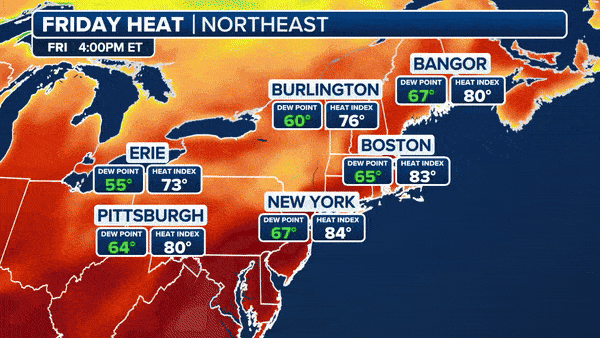
A dangerous and widespread heat wave is predicted to impact over 135 million people across the Northeast and Midwest in the upcoming week. According to various weather forecasts, temperatures will soar into the mid- to upper 90s in many cities, with some areas experiencing record-breaking heat waves.
The first signs of this heat wave can be seen in Chicago, where a moderate heat wave is expected to begin on Sunday and last through midweek. The city's mercury is predicted to reach highs in the mid-90s during this period, with dry weather accompanying the hot spell.
Philadelphia had an early taste of summertime heat earlier in the year, but the impending heat wave will be significantly hotter and longer. Temperatures are expected to climb into the mid-90s several days in a row, with hottest conditions anticipated around midweek. The streak of 90-degree days in Philadelphia could extend almost an entire week.
At least 110 million people across the eastern United States will experience a heat wave next week, including areas from the Mississippi Valley to southern New England. Forecasters are concerned that over 135 million people could be at risk of a dangerous heat wave due to expanding high pressure.
The peak of the heat wave for most of this zone is expected around the same time as the start of astronomical summer, which takes place on Thursday, June 20, at 4:50 p.m. EDT.
Experts recommend avoiding outdoor activities during the afternoon and evening hours when temperatures are usually hottest. People who must be outside are encouraged to drink plenty of water and take breaks to cool off in the shade.
Heat waves, on average, kill more Americans than any other type of severe weather such as tornadoes, hurricanes, floods and lightning.






